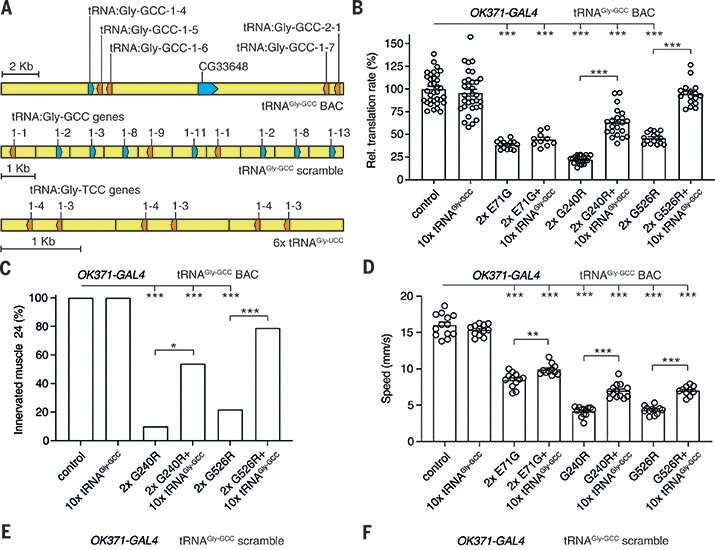Credit: DOI: 10.1126/science.abb3356
A team of scientists led by Erik Storkebaum of Radboud University's Donders Institute have deciphered the molecular mechanism underlying a form of Charcot-Marie-Tooth (CMT) peripheral neuropathy. This disease affects both motor and sensory nerves. This scientific breakthrough suggests a new form of treatment for this incurable disease. Their findings will be published in Science on 3 September.
The CMT subtype studied by Storkebaum and his team occurs in one in 100,000 people, making it a fairly rare disease. Until now, scientists have been unsure about the molecular mechanisms of this disease and there are no effective medicines available yet.
In patients with the disease, both motor and sensory nerves are affected, leading to muscle weakness and sensory disorders. "The disease causes the loss of feeling, under the soles of the feet, for example, as well as muscle weakness and because of that high-stepped gait and foot deformities. The disease progresses slowly but steadily, and patients often end up in wheelchairs," says lead researcher Erik Storkebaum.
Mutations in six genes
Mutations in six genes that code tRNA synthetases cause Charcot-Marie-Tooth (CMT). tRNA synthetases bind amino acids (the buildings blocks of proteins) to their transfer RNA (tRNA), an essential first step in the production of protein. In their research, the scientists show that CMT mutant versions of one such tRNA synthetase (glycyl-tRNA synthetase) can still bind its tRNA, but then fails to release it.
This "capture" of the glycyl-tRNA depletes the supply of this tRNA in the cell, resulting in an insufficient delivery of glycyl-tRNA to the ribosome (the molecular machine that makes proteins). Consequently, the ribosome stops producing proteins when it reaches a codon for the amino acid glycine. This disrupts the production of proteins and causes a cellular stress reaction.
The scientists show that increasing glycyl-tRNA amounts in transgenic animals can prevent peripheral neuropathy and disrupted protein synthesis in fruit fly and mouse models for CMT caused by mutations in glycyl-tRNA synthetase. Accordingly, increasing glycyl-tRNA levels in patients with this form of CMT could be developed as a new treatment for this incurable disease.
Storkebaum: "We have now unraveled one form, but we suspect that there are five more forms of CMT based on a similar mechanism and they can therefore be mapped." This form of CMT is the first neurodegenerative disease that has been mapped at the molecular level and has a path toward treatment. Diseases like Parkinson's and Alzheimer's could, in theory, be mapped out in a similar way. "So this is a promising discovery for the future treatment of other neurodegenerative diseases as well."
More information: Amila Zuko et al, tRNA overexpression rescues peripheral neuropathy caused by mutations in tRNA synthetase, Science (2021). DOI: 10.1126/science.abb3356
Journal information: Science
Provided by Radboud University
























